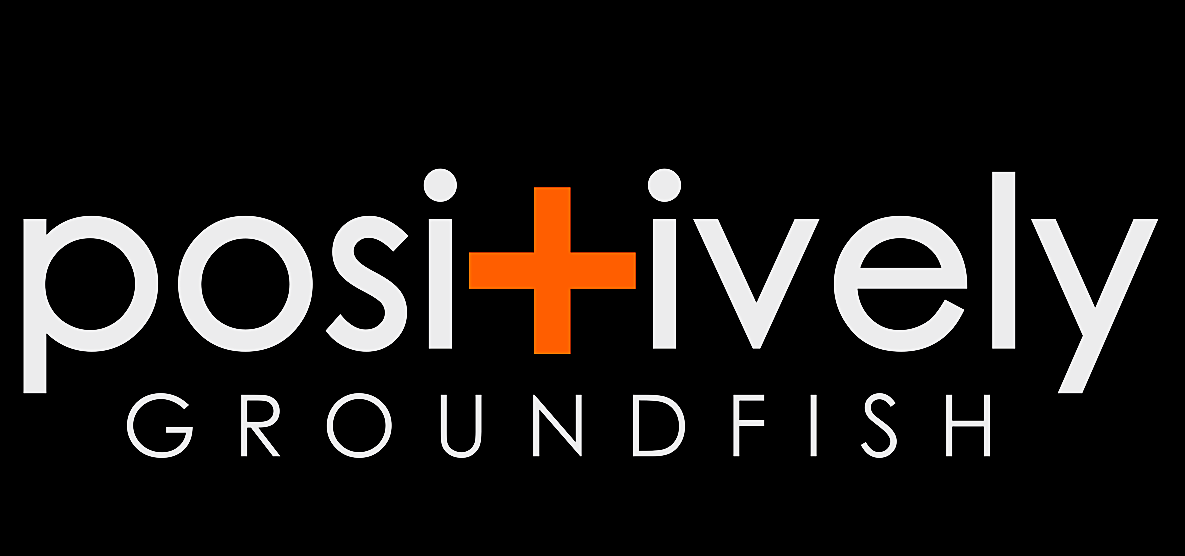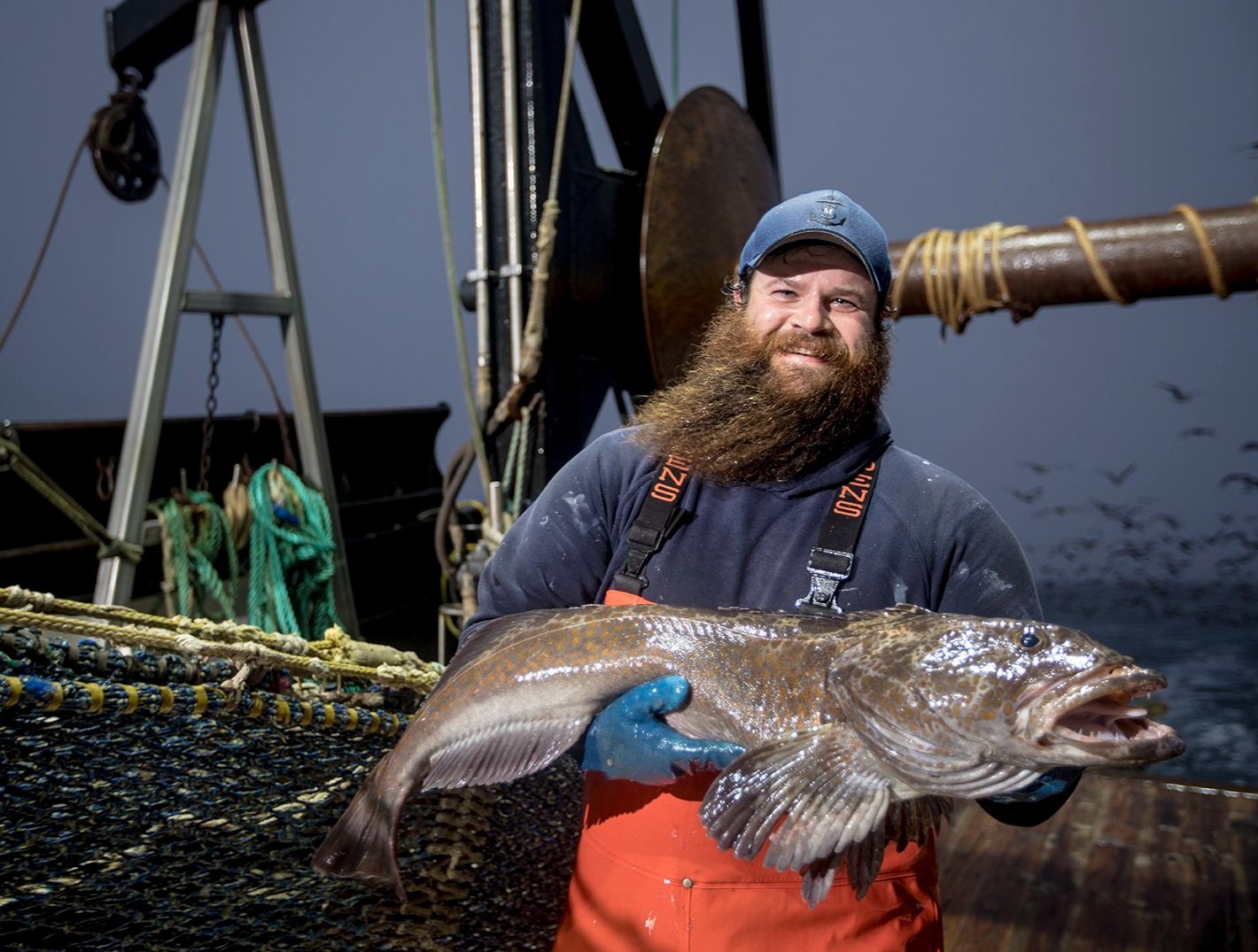LINGCOD - FISH SPECIES FEATURE
What is a Lingcod?
Lingcod (Ophiodon elongatus), is NOT aptly named, because biologically speaking Lingcod is neither a Ling nor a Cod, but instead belongs to the Greenling family. Interestingly, between 10-20% of Lingcod naturally develop a bright blue or green color; but don’t worry their bright blue fillets will turn snow-white when cooked. Lingcod are predatory fish that live in deep cold waters along the West Coast of the United States, extending all the way into Alaska. Boasting healthy and abundant populations, Lingcod is certified sustainable by the Marine Stewardship Council and rated a "Best Choice" by Seafood Watch.
Revered as a prime catch among fishermen, Lingcod is considered one of the best-eating fish on the West Coast. This distinctive white fish has a mild, slightly sweet flavor, and thick fillets with a firm texture and large, moist flakes. Lingcod is versatile but excels in grilling, baking, and pan-frying. Nutritionally, Lingcod is low in fat and high in protein, providing about twice as much protein as wild King Salmon. Moreover, Lingcod is rich in Omega-3, offering twice as much as Atlantic Cod. Lingcod is also one of the best food sources of Phosphorous, Potassium and Selenium.
Lingcod Quick Facts
Lingcod Biology
Despite their name, Lingcod are not true cods or lings; instead they belong to the greenling family and are actually a unique species with no close relatives. Lingcod earned the nickname “sea dragons” or “dragons of the deep” for their voracious predatory behavior as well as their large head and wide mouth filled with sharp teeth.
Lingcod are found along the U.S. West Coast, typically inhabiting rocky reefs and kelp forests from the intertidal zone down to depths of 1,500 feet. They are well-adapted to these environments, often blending in with the rocky sea floor.
Lingcod are a fast-growing and voracious predatory species that can reach up to 5 feet in length and weigh as much as 80 pounds, though commercially-caught Lingcod are typically between 10-20 pounds. They can live up to 25 years, although the majority do not live past 14 years. Lingcod prey on a variety of marine life, including smaller fish, squid, octopus, and even smaller Lingcod.
Lingcod Sustainability
Wild & Natural
Lingcod is a wild-caught fish species. This means it requires no arable land, no precious fresh water, nor any fertilizer, pesticides, polluting chemicals, or antibiotics to produce this excellent protein source.
Healthy and Abundant fish population
Lingcod belongs to the West Coast groundfish fishery which is among the most positive sustainability success stories around. Following a decline in the species’ population levels during the 1990s and receiving a federal disaster declaration in 2000, this species has bounced back to great abundance levels thanks to a total commitment to sustainability.
Well-managed fishery
Lingcod, along with all other West Coast groundfish, are subject to a rigorous science-driven management process through the federally appointed Pacific Fishery Management Council that ensures continued abundance in the future. This entails scientifically set limits on total catch and limitations on when, where, and how fishing can occur (i.e., protecting sensitive habitats, and using gear that minimizes by-catch).
Keeping it local
While the average seafood product consumed in the United States clocks up over 5,000 food miles, Lingcod are caught and processed locally on the West Coast. Keeping it local not only minimizes food miles and their carbon footprint but also maximizes product freshness and quality.
100% monitored FISHERY
Lingcod fishermen are 100% accountable for their catch. All West Coast fishermen who catch Lingcod with trawl have an independent observer and/or camera system on board on every single trip to ensure compliance and complete record-keeping.
Independently certified SUSTAINABLE
Since 2014, Lingcod caught in California, Oregon, or Washington has been certified sustainable by the Marine Stewardship Council, the gold standard for wild sustainable fish. Moreover, Lingcod is rated as a green "Best Choice" by Seafood Watch
Lingcod Nutritional Content
Nutritionally, Lingcod is low in fat (0.9g/100g) and high in protein (19g/100g), and comes in at only 87 calories per 100g of fillet. That means Lingcod has an impressive 90.5% protein content, which is about twice the level of salmon or skirt steak. Lingcod thus keeps you satiated and fuels your cells for greater performance.
Moreover Lingcod is packed with important micronutrients, such as essential Omega-3 DHA and EPA. Calorie for calorie, Lingcod provides twice as much Omega-3 as Atlantic Cod. Lingcod stands out for being among the best food sources of Phosphorous, Selenium, and Potassium. Lingcod is a nutritional powerhouse you would do well to include in your regular meal rotation.
Learn more about how Lingcod compares to other foods here.
Lingcod Taste & Cooking
Lingcod is a prized catch by fishermen, and regularly tops that chart in our surveys as everyone’s favorite eating fish on the West Coast.
Taste: Lingcod is a distinctive white fish with a mild, slightly sweet flavor, a thick fillet with a firm texture and large, moist flakes. It’s similar in taste and can substitute for cod and halibut.
Preparation Method: Lingcod is a versatile fish to cook with, that works for most preparation methods. It’s on the leaner side so it can take sauces well, but it has enough oil content to stay moist and flakey. With its thick chunky fillets, Lingcod is particularly great for baking, grilling, and pan-frying. Lingcod also works fantastically for battered fish & chips and tacos. To keep it healthier, you can experiment with low-fat cooking methods like poaching, steaming, sous-vide or curing. You simply can’t go wrong with Lingcod.
We are providing some recipe inspiration for Lingcod below, but Lingcod works well with most white fish recipes.
Lingcod Recipe Inspiration
How to break down a Lingcod
Recipe: Bang Bang Lingcod
Easy Family Favorite Recipe: Beer-Battered Lingcod Tacos
Common Questions
-
Approximately 10-20% of Lingcod have a bright blue appearance, which does not only affect their outer coloring but also turns their meat an iridescent blue hue. Don't worry, it turns snow-white when cooked, and is completely safe to eat.
This is a natural phenomenon caused by a pigment called biliverdin. As to what causes this pigment to develop in the Lingcod's bloodstream is still not entirely understood. Research suggests that there is a link between this blue appearance and the Lingcods' diet and energetics, but scientists have not yet cracked the physiological mechanisms behind this blue color.
-
Lingcod is available in good supermarkets, fish markets, and restaurants along the West Coast of the US, and increasingly throughout the US. We have provided a list of markets, online suppliers, and restaurants that focus on these local sustainable species. Check out our Retail & Restaurant Guide>>
-
Lingcod typically costs between $12 - $20 per lb, depending on season and retailer. That translates to $3-$5 per 4oz portion. Lingcod is a top tier fish - it's local and sustainable, and keeps taking top spot in our surveys of west coast fishermen's favorite white fish.
-
No, despite their name Lingcod are neither a ling nor a cod. Instead Lingcod belong to the greenling family, and are actually a unique species with no close relatives.
-
Lingcod exhibit large size variation due to factors like genetics, available food sources, and environmental conditions. Males typically remain smaller, while females grow larger, especially as they age, which may also enhance their reproductive success.
-
Yes, Lingcod is a very healthy fish species that is very high in protein (19g/100g) and low in fat (0.9g/100g), coming in at only 87 calories per 100g of fillet. Moreover Lingcod is packed with important micronutrients, such as essential Omega-3 DHA and EPA. Calorie for calorie, Lingcod provides twice as much Omega-3 than Atlantic Cod. Lingcod stands out for being among the best food sources of Phosphorous, Selenium, and Potassium. Lingcod is a nutritional powerhouse you would do well to include in your regular meal rotation.
Learn more about how Lingcod compares to other foods here.
-
Lingcod is very high in protein (19g/100g) and low in fat (0.9g/100g), and comes in at only 87 calories per 100g of fillet. That means Lingcod has an impressive 90.5% protein content, which is higher than egg whites, chicken breast or whey protein powder. Lingcod thus keeps you satiated and fuels your cells for greater performance.
Learn more about how Lingcod protein levels compare to other foods here.
-
Lingcod is a versatile fish to cook with, that works for most preparation methods and with most white fish recipes. Lingcod is a great substitute for halibut or cod.
Lingcod is on the leaner side so it can take sauces well, but it has enough oil content to stay moist and flakey. With its thick chunky fillets, Lingcod is particularly great for baking, grilling, and pan-frying. Lingcod also works fantastically for battered fish & chips and tacos. To keep it healthier, you can experiment with low-fat cooking methods like poaching, steaming, sous-vide or curing. You simply can’t go wrong with Lingcod.
-
Lingcod is a versatile fish to cook with, that works for most preparation methods. It’s on the leaner side so it can take sauces well, but it has enough oil content to stay moist and flakey. With its thick chunky fillets, Lingcod is particularly great for baking, grilling, and pan-frying. Lingcod also works fantastically for battered fish & chips and tacos. To keep it healthier, you can experiment with low-fat cooking methods like poaching, steaming, sous-vide or curing.
Try out some of the Lingcod recipes on this page, or try Lingcod in any halibut or cod recipes.
-
Lingcod in Stardew Valley can be found in several locations. They are typically available in the ocean and river areas during specific seasons. To catch Lingcod, you should fish in the river during the winter months, and in the ocean during the fall and spring. For more information see our Lingcod Quest Guide.



























